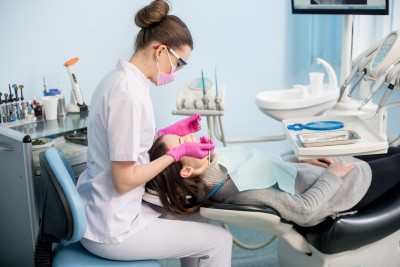Proven Tips on How to Effectively Remove Plaque
 Although there are numerous ways of removing plaque from your teeth, some removal techniques are more effective than others. Plaque removal should be part of your oral health as it prevents the accumulation of bacteria that can cause serious problems such as tooth decay.
Although there are numerous ways of removing plaque from your teeth, some removal techniques are more effective than others. Plaque removal should be part of your oral health as it prevents the accumulation of bacteria that can cause serious problems such as tooth decay.
Our guide discusses plaques and the best way to eliminate them from your teeth.
What Is Plaque?
Plaque is the sticky coating that forms on your teeth’ surface. It offers favorable grounds for the growth and multiplication of bacteria, ultimately causing tooth decay and gum diseases. Bacteria produce acid, which weakens the enamel, thereby causing exposing the delicate inner layers of teeth to diseases. If plaque buildup persists, you may lose the sparkling white appearance or develop gum diseases. Thankfully, you can easily remove plaque from your teeth and put all these problems at bay.
What Causes Plaque Formation?
Plaque forms as a result of normal processes in your mouth. When bacteria mix with teeth, they leave behind plaque that settles on your teeth. When left to sit for a long time, these bacteria produce an acid that causes your enamel to wear out, exposing it to gum diseases and cavities.
Also, dead cells from your teeth form plaque as well. Genetics may also dictate how much plaque accumulates on your teeth’ surface. For example, your immune system determines how easily bacteria will attach to your teeth’ surface. When your immune system is in healthy levels, your body will release antibodies that coat the bacteria, preventing their accumulation on your teeth. If your immune system is weak, the body will produce fewer antibodies, and thus more bacteria will accumulate on your teeth surface.
What Happens If You Fail to Remove Plaque from Your Teeth’ Surface?
If left to accumulate, plaque will eat your teeth’ enamel, exposing the delicate inner layers, resulting in tooth decay or tooth loss. In addition, plaque facilitates the spread of bacteria throughout your dental lining and mouth, leading to other serious health issues.
If bacteria on your teeth’ surface find their way into your system, you’re likely to experience other health issues, including sepsis.
An infected plaque can also increase the risk of periodontitis, which is the inflammation of the tissues that support your teeth.
What Are the Most Effective Ways of Removing Plaque from Your Teeth?
· Thoroughly brush your teeth using an electric toothbrush. An electric toothbrush offers plenty of benefits, including removing plaque with ease. Although standard toothbrushes are still effective in cleaning teeth, they tend to push most of the plaques between your teeth. Electric toothbrushes do a more thorough job of eliminating plaque effectively. In addition, most advanced electric toothbrushes feature a timer that ensures you’re brushing your teeth for at least 2 minutes.
· Use mouthwash to prevent plaque buildup. It would be best to brush your teeth after every meal, but sometimes this is not applicable, especially when you’re outdoors. A mouthwash can equally reduce the accumulation of plaque on your teeth.
· Floss your teeth regularly. You’re advised to use dental floss every day to remove plaque between the teeth.
We hope our guide was helpful. If you’re looking for a reliable dental team to help you maintain good oral health, we are your best bet. Give us a call and schedule an appointment.
For more information regarding your dental health, please give Dr. Apsey of Smile Brightly Dental a call today! We are located in Warren, MI and we can be reached at 586-573-7700!
